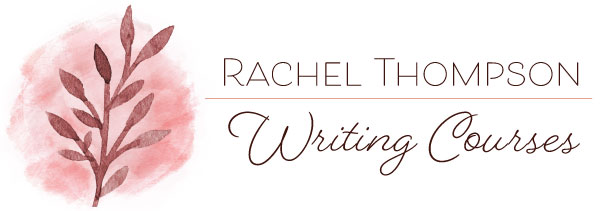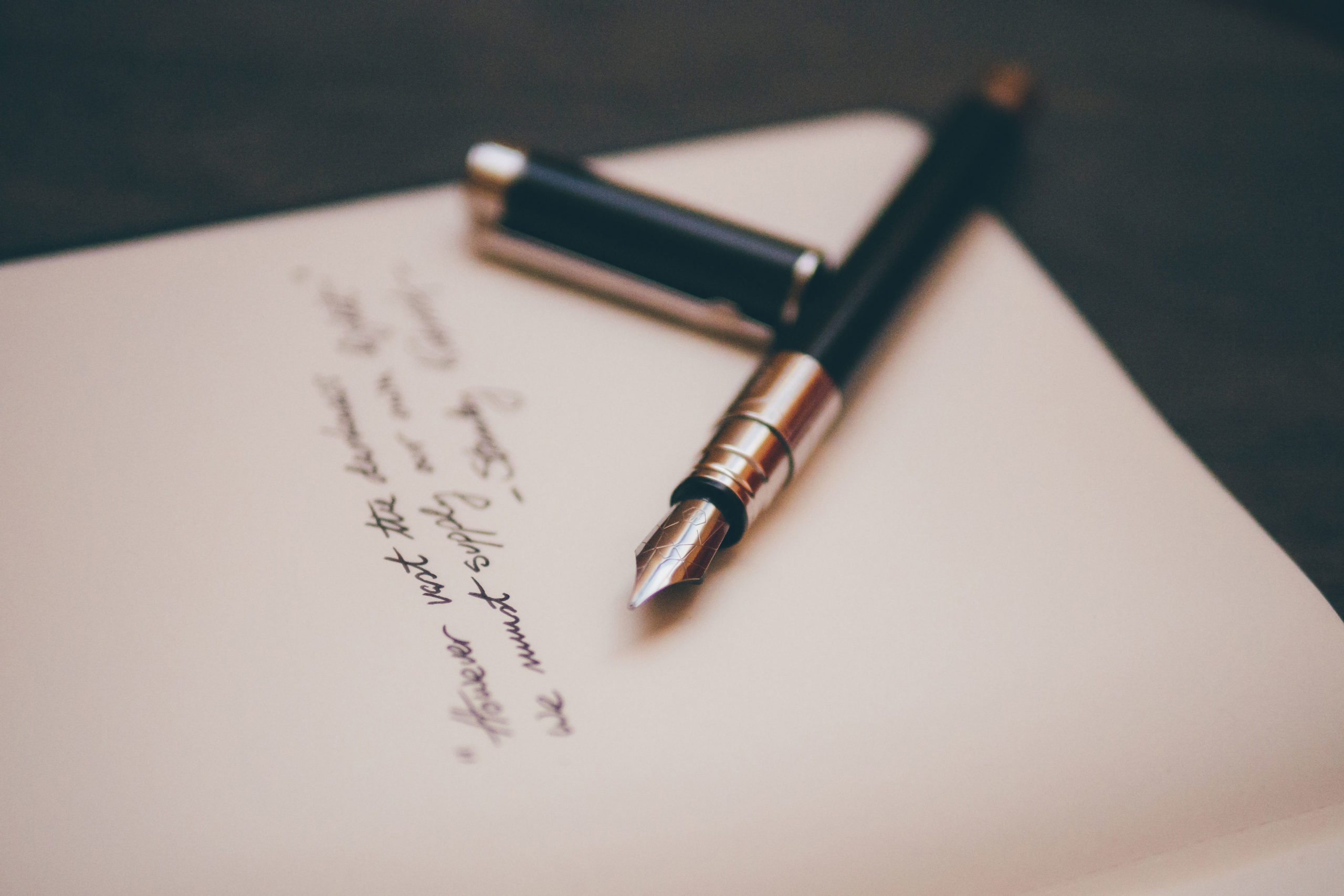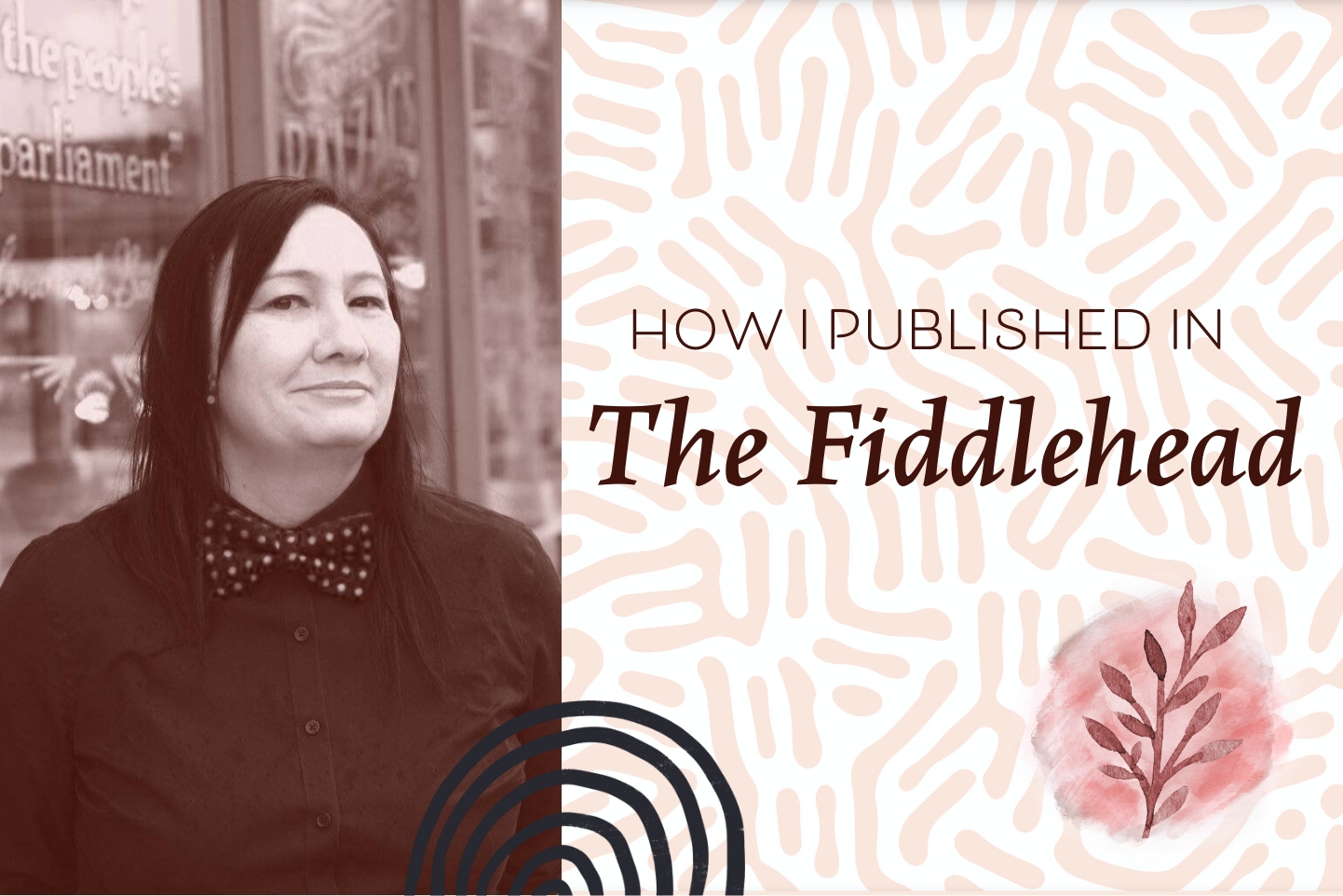With the rhythms and events that normally shape our days cancelled or viewed through a window, I’m often dazed and my perception of time is off.
I spent the first month of the pandemic writing poetry full of sand and hourglass imagery and losing time in my day. And every writer I speak with, from established to emerging, tells me their writing projects and schedule have suffered in all the uncertainty.
Thinking about time and how we miss it, inspired me to pull together temporal-ideas related to writing practice, and to share a five-step practice for finding more time to write.
Time for What’s Important
In the before-pandemic times, I had a mantra: “I have the time I need to write what’s important. I can’t do it all, and I will do nothing well if I try to do it all.” In these during times I think it’s still true, but it has required that I learn to edit my life so I can focus on what’s truly important. I try to be gentle with myself as I look at everything I’ve committed to writing and the time I need to write. I ask, What is most important for me to use the time I have right now? What can I let go of doing?
Of course, it’s a work in progress. I lose time to anxious days and (sometimes really necessary) distractions, like lending my ear and voice to anti-racism efforts.
Anytime is Never
The adage “what can be done at any time is never done at all” is true. It often pops into my mind when I put something on a list of things I want to do or write, without a specific timeline. (It’s doomed to fail from the outset without a deadline.)
As I hone in on the essential things in my writing, I’m scheduling times to write, while also forgiving myself if I lose time or go about this imperfectly. I also create deadlines that other writers and friends will help hold me accountable to meeting—again, gently—something I started doing last year and that has proven really effective to help me keep a writing project on task.
Timers Help With All Kinds of Writing
To write the poems with hourglass metaphors, I set up a block of time to write and then I set a timer that freezes everything on my computer so I can focus on the single task of writing that poem. (It’s extreme, yet effective.)
We’re all thinking about time more than ever, and it shows in my recent conversations with writers. In my class on revision, we talked about moving between different modes of writing using a timer. So, rather than get caught up on polishing a sentence and making it beautiful while you draft, these writers will set a timer to go in and out of each mode without letting one infringe on the other.
One writer in my courses even suggested using a timer to write about raw emotions. She sets a limit on how long she dives into heavy material. It is incredibly wise to pace yourself so you don’t spend too much time on writing with a high emotional toll, and this strategy will help.
In-Time Opportunity
I have a propensity to live in the future, planning the next step. This is called living in through-time. My friends often gently call me out for talking about what’s happening six months from now rather than today or tomorrow.
Did the pandemic toll the death knoll for through-time? We can’t plan the future and the shape of my whole year changed and became much less defined. Whatever the long-term outcome of this uncertainty will be, right now it feels like an opportunity for me to kick my through-time habit and to live in in-time.
Sadly, that hasn’t quite panned out on days when, rather than plan the future, I’ve imagined catastrophic ones. But, given this is a once in a (we hope) Millenium opportunity to work on this, I’m finding my way to live in more present presence. And I’m asking myself How can I live more in the present? As I write this, I hear a faint whisper in my mind, in your writing.
A Guide to Find Time to Write and Build a Creative Writing Practice
I created the following guide because so many writers in our community tell me that their biggest challenge as a writer is simply finding the time to write. And I believe it! That’s how it feels for sure, that there just isn’t the time in the day for writing.
Yet, I also believe there are often other obstacles that make the time we have feel more fleeting. I explore these obstacles below. But for right now, I’d like you to suspend this disbelief and begin by telling yourself that there is time for you to write.
Make it an affirmation and say it aloud: “I have the time to write.” Presuming you are in a quiet place where you can say such things aloud. If not, write it on the cover of your notebook, make it your screensaver, put it up as a poster, or just go ahead and say it so the world can hear you: I HAVE TIME TO WRITE!
As with all my guides, I encourage you to take what is useful for you and your writing practice. But, I also encourage you to disregard whatever isn’t useful to you. The guide is not here to overwhelm or confuse you. You know your writing life best and I trust you’ll find what works for you to write and publish luminously.
I’m here with you every step of this journey, luminous writer.
Buckle Up!
You’re in for a wild ride (metaphor alert). Each step of this guide contains a mini-lesson and an assignment with concrete actions for you to take. Pace your journey through the materials however you’d like, but I recommend doing one step per day over the next five days. It’s essential that you do the assignment actions before you go on to the next step so you can build momentum and each step builds on the next.
Here’s the road map for the steps ahead…
- Step One: Give Writing the “Right of Way.” You’ll make writing a priority and give it the right of way, as you’ll work on creative boundaries around your writing.
- Step Two: Navigate Road Blocks and Diversions. Gather some distraction-busting tools and find opportunities to notice, pay attention, and tune-in as a writer, even on your busiest of days.
- Step Three: Make Fear the Headlights (Not the Steering Wheel). Flip fear out of the driver’s seat and let it be a light to guide you toward the places your writing needs to go—rather than steer you away from your writing practice.
- Step Four: Map Your Routine. You’ll set up on ramps—practices and rituals—for you to begin your writing sessions and create a map for the coming weeks and months, building a writing routine you can keep.
- Step Five: Stay on the Road. You’ll keep on truckin’ by testing and adapting your routine until it fits you.
Step 1: Give Your Writing The “Right of Way”
Right here, right now, I challenge to make some hard choices about what has to go so you can give way for your writing. I say this with love and from experience, because, like you, I’m often tempted to try to do it all, or am compelled to fit others’ expectations of what I should be doing. I have said yes to so many things that weren’t writing at the expense of my writing. I have over-committed or spread myself too thin until I was flattened out.
Saying yes to too many things meant I was saying no to my writing—and to a fulfilled life as a writer. And, let’s face it. Being a writer requires one thing only: time to write.
The moment of reckoning came when I realized my writing life would wither away If I couldn’t start to say no to other things. If I didn’t set writing as a priority, other things would always get in the way. But not only that, when I was trying to do all the things, I was doing nothing well.
I know you can’t say “no” to every non-writing obligation. I expect you have people who rely on you, and obligations you must meet. But I urge you to think about how the people who count on you would feel to find a better, more fulfilled and attentive you. Wouldn’t the you with a consistent writing practice be more grounded and present to the needs of others? Would the act of fulfilling your other obligations become more delightful if you could benefit from the introspection, slowing down, and deep noticing that writing provides us?
I bet your friends and family, those who really hold your best interests at heart, would understand if some tasks get the “good enough” treatment to free up time for you to write. They’d give you permission to let go of executing less-essential things “perfectly” if they knew this would let you live a fuller, more meaningful life as a writer.
Before you raise your objections if you have them, I want to clarify that I don’t believe a happy writing life requires the intensity popular wisdom suggests. You don’t need to go hard into the practice espoused by—let’s face it—men with less demands on their daily lives. You can still be a writer even if you don’t write every morning, or even every day of the week.
You can develop a sustainable writing practice and produce amazing work with a consistent and balanced routine that works for you.
It’s time to clear enough room to develop a writing routine you can keep and love. I believe you can do it.
As you work on the assignment below, I encourage you to start thinking about your time like it’s a finite resource. (Because it is the most finite resource of all.)
“Right of Way” Assignments
Assignment 1: Create an Anti-To-Do List
- Make a list of everything you do in a typical week, including quotidian things like making breakfast and getting dressed, and anything at all that requires a modicum of time. Put decisions you regularly need to make on the list, too.
- Mark any items you can immediately get someone else to help with and start an anti-to-do list with these items at the top.
- Check your first list again and find at least one thing you can say a flat “no” to doing. Move them to the anti-to-do list. If it helps, tell people about this list and that you’re saying no to some things now so you can say yes to your writing dreams.
- Write a list of people you can ask to help you with any other items and make notes about how you might ask them. Decide beforehand if this will be an easy or hard conversation and determine what’s more important: keeping the status quo of the relationship or freeing the time? You have the choice to ask in a way that preserves the relationship. But consider that it is worth at least one uncomfortable conversation to try to get the support you need. All writers need help to make the time to write.
- Save and keep your anti-to-do list updated. You’ll probably start to notice more tasks and decisions that crop up that take away from your writing time. Keep updating your anti-to-do list and enlisting help (or letting go of things) as you do.
Assignment 2: Bulk Decision-Making
The brain is a physical thing, not a computer. It gets tired like the rest of your body at the end of a long day. This means that each decision you make in a day leads to fatigue that can make writing—and even just clear thinking—difficult as the day goes on.
So, give your brain more energy for writing by reducing your mental load. One way to do this is to make decisions ahead of time, and in bulk. This will cut down on your daily choices and therefore your mental fatigue.
Group similar decisions into bulk decisions. Start with just one type of decision. You might decide what you’re going to wear for the next two days, plan all your meals for the week, or you schedule one time per day to respond to all email requests, ignoring email the rest of the day.
Step 2: Navigate Road Blocks & Diversions
In the previous step, I had you clear the path and give your writing the right of way. In this second step, you’ll navigate through the roadblocks and diversions that can steer you off and away from your writing.
It’s clear that every decision you make in a day, no matter how small, impacts your focus and will to write. For this reason, it’s important to use tools and strategies to avoid tempting distractions and to find your way back up the on-ramps to your writing if you do get diverted.
It might help to know that distractions from writing aren’t just a current concern. It has always been a challenge for writers to stay focused. One of my favourite legends about this is that Victor Hugo is said to have found his social life a big distraction from his writing. After an ultimatum from his publisher, apparently he would take off his clothes and lock himself in an empty room with pen and paper, ordering his servants to not return his clothing until he completed the manuscript for Les Misérables, which finished ahead of schedule.
It’s somehow reassuring to hear that even Victor Hugo needed a “life hack” to stop him from procrastinating, but it’s heartbreaking when you think that today not only do we battle our own, humanly distractible minds, but there are companies actively trying to hack our minds and keep us on their social media platforms using neuroscience against us.
We carry around our social lives in a distracting devices and battle the expectation of constant connectivity; we contend with software literally programmed to modify our behaviour and steal our attention.
This step is for you if you have ever set a time to write, but instead bumbled around on Facebook or cleaned out a random closet in your house instead of getting the words on the page.
For me, I know I can be fresh and focused first thing in the morning, and if I could, that’s when I would do most of my writing. But in this season of my life, when I have small children, that’s not the time that works for my writing. Rather than change this situation, I must prepare for my inevitable lack of focus and worn-down decision-making control when the time I can write opens up later in the day.
I’m not the kind of writer who stays offline, and I’m to advocating for this. I use all the social media tools and tech that I find helpful, and you probably do, too. I just think it’s critical that we remember this technology isn’t benign; it doesn’t have our best interests at heart. If I’m wasting time on Twitter, it’s because it was engineered for me to waste that time by a team of really smart people.
So, it’s not a personal failing if you find technology distracting. If you choose to use these tools, you can’t just chide yourself into not letting them distract you. You need to use strategies and tech tools built by other teams of really smart people to counteract the pull to be online to balance the scales.
Without tools and strategies to counter-act technology, I wouldn’t be able to get any writing done.
Don’t aim for perfection! Even if you use all of the techniques in the assignment below, you will get distracted sometimes. There will be days when you won’t want to get started. Try to just notice when this is happening, then say to yourself, gently, “Hey, it’s time to write right now.”
Road Blocks & Diversions Assignments
Assignment 1: Prepare for Distraction
Setting yourself up for fewer distractions throughout the day and not allowing yourself to get diverted from writing requires planning and in some cases installing software to keep you on track. Let the “present” you give a boost to “future” you by getting these in place now.
- Write a list of the biggest distractions and obstacles for you to get started writing.
- Free-write and answer the questions: What can I let go of that doesn’t serve my writing? What distracting habits can I replace with ones that better support my writing? Will uninstalling software on your phone or letting go of perfectionism about the state of your home help? Consider if there are locations you can write that don’t have Internet access, or where you can avoid the house-tidying distraction.
- Ask for help. Often the best answer to technology or other infringements on our time are real-life social solutions. Set up a daily check-in with a writer friend who will help you stay accountable to your goals. Tell other people that you’re not doing something on your distraction list anymore to help you find more time to write and let their positive peer pressure keep you on track.
- Add anything that you want to stop doing to your anti-to-do list. Then post your list somewhere where you’ll be reminded of your resolve not to do these things.
Assignment 2: Find open space
Every day, give yourself time to pause and reflect without any distractions: go for a walk, vacuum, wash dishes (my favourite), or just sit and breathe deeply in uninterrupted contemplation. This will help you find a balanced writing life and give you more moments for you to sift through ideas and make mental connections that benefit your writing.
Assignment 3: Increase Your Focus
Here are some options to avoid technological distractions, and my favourite technique for staying focused on your creative writing life.
- Install software to block your computer and phone from everything but your writing tools during your set writing times. I use a program called “Cold Turkey” to set my computer up with both a hard writing time when nothing but word processing programs work and a softer research time when I block social media and news websites. And I use “Offtime” on my phone to schedule times when my social media apps are blocked.
- Daily meditation (or walking)
- Morning pages (from Julia Cameron’s The Artist’s Way)
- Chunk your writing time (for example, write for 45 minutes, take a 15-minute break, then repeat)
- Use a timer (concentration timers help you return to focus)
- Take notice of everything you come across in your day
- Set a word count goal (like, write 500 words per day)
- Write with a friend to leverage peer pressure
- Leave a hook (make notes at the end of your writing session to help you get started on your next writing session)
Step 3: Make Fear the Headlights (Not the Steering Wheel)
In our previous step, you navigated roadblocks and diversions. And in this step, you’ll learn to flip fear out of the driver’s seat and let it guide you toward the places your writing needs to go. Because, when it comes to writing, fear is the inner-voice screaming, “HERE BE DRAGONS!” each time you set out to write your most important work.
Remember what I said in the introduction about there being something more to the “lack of time” reason for not writing? If after doing the first assignments in this guide you discovered extra pockets of time in your week—through giving your writing the right and way, and avoiding distractions—it’s still quite possible this extra time isn’t enough to give you a long-term, dedicated writing practice.
At least that hasn’t been true for me or writers who take my courses.
Yes, you need to find the time to write, put it on your schedule, and set up a distraction-free zone for you to focus. But then you’ll probably find you need to face the boss of all distractions from your writing—fear.
As writers, we fear everything from a mediocre execution of the vision we have for our writing, to the emotional toll of writing about painful events, further fall-out from our families or communities when we spill the truth about them in our work.
Fear for you might manifest in different ways. It might look like endlessly revising a piece. It might look like a joyless, super-driven approach to writing. And by the way, these approaches might eventually get you somewhere, but they are unlikely to lead to build a sustainable writing practice.
I want you to delight in the process of being a writer, and I challenge the idea that writing needs to be a hard slog. You’re here because you want writing to be a part of your life for a long time. For that to happen, you will need to actually enjoy your creative and contemplative life.
What if instead of being hard and scary, writing could be easy and delightful?
I think we can all have a more enjoyable time with writing if we put fear in its place. Finding joy in writing and counteracting fear starts with recognizing that fear is simply the dark side of excitement and anticipation. When you think about it, our creative fear feels a lot like excitement. We get butterflies in the stomach, our senses are activated.
The following assignment will help you move fear out of the driver’s seat. You’ll take control of the steering wheel (and brakes). Fear will still be with you, but it will illuminate those places that seem scary at first but are exactly where your writing needs to go.
Make Fear the Headlights Assignment
Answer the call to be brave
Fear will always be with us when we’re writing—writing is a call to be brave and share deep truths, after all. But fear doesn’t need to limit our writing or scare us off from creating a writing practice we can keep. Try the following steps to wrest control of your steering wheel from fear.
- Reflect on the times where you hit a wall and met resistance in your writing—times when you missed a deadline, skipped a writing session, or found yourself avoiding a topic you want to write about.
- Now free write on the question, What do I fear most about writing? Don’t filter. Write down the first things that come to mind.
- Then list three things that scare you about the writing that you want to pursue.
- Look at what came up in steps 1-3, then free-write again, this time on the question: Can the things I fear truly do me serious harm? Most likely they will not be anything you can’t handle.
- Thank your fear for its protection. Try saying, “Thank you for protecting me,” out loud. Then let your fear know you’ll be moving toward what you fear about your writing from herein.
- Write down one sentence you’ll remember (like a mantra) that will remind you that instead of letting fear control the story, you will let it be the light out in front, helping you see where you’re ready to grow as a writer.
- Post this mantra/sentence somewhere you will see it when it’s time to write.
- Bonus: Be extra-brave and share one fear you’ve had about writing with a trusted writing-friend!
Step 4: Map Your Routine
You’ve slain your dragons, or rather, made your fears more helpful than intimidating. You have pre-made daily decisions to clear your mental load and have tools at the ready to keep you focused as you prepare to write. In this semi-final step, I invite you to set up on-ramps—practices and rituals—for you to begin your writing sessions and create a map for the coming weeks and months to build a writing routine you can keep.
You’re already moving toward an on-ramp to your sustainable writing routine. Now it’s time to make your map by building a weekly schedule.
- Your schedule should feel comfortable and manageable. It’s better to do less than more and gradually build up your times. You will want it to be as smooth as possible for you to get onto your on-ramp to write.
- “I have fifteen minutes!” If you are disappointed to find you only have fifteen minutes to write in a day, rather than think, “oh no, I only have fifteen minutes,” try thinking, “wow, I have fifteen minutes!” Aim to feel gratitude for what you have—even if it’s just a little time to write and pursue your passion.
- Make it sustainable. You probably can get up a few hours early to write for a few weeks, but consider if that’s something you can do for a whole year. (That’s for you to determine—some writers do it happily.) When you’re setting your routine, think beyond what is possible in the next few weeks and consider what will work for you over the entire year to come.
- Get your mise-en-place on. Plan some time before your writing session—either earlier in the day, or immediately beforehand—set up your notebook, open your document (and Cold Turkey Writer), fill the kettle, and take a minute to close your eyes and picture one seed of an idea (am image, a metaphor) that could be the hook to get you into your writing session.
- Make this a ritual. You could make your mise-en-place a ritual, something you repeat each time before you begin to write. Over time this will help you to get in the zone, much like how when you brush your teeth and read a book before bed it signals to your body that it’s time to sleep. Your ritual before you begin to write will cue your mind to prepare to focus.
- Let your purpose light you. It is your duty to bring your gifts to light; when you don’t do this, you’re not fulfilling your purpose, and you’re depriving others of your most luminous writing. Commit to going over the reasons why you write at least once a week, or more when you’re feeling a lot of resistance to writing. I put a place for this on the top of the planner sheet I link to below, but you could also just set up a weekly time where you remind yourself precisely why you are pursuing this creative passion.
- Check-in each week. All creative routines require continuous fine-tuning and adjustment. So, each week, give yourself a minute to review how it went. Ask yourself, what was your weekly high? What didn’t work (i.e. your weekly low)? And, what did you learn about your writing routine that week?
- How do you feel about writing this week? I think it’s also really interesting to track how you feel about writing each week. Over time this could tell you a lot about whether your writing practice matches with the reasons why you write.
Map Your Routine Assignment
Weekly writing Planner
As you build your schedule, aim for more frequent, shorter sessions. Remember, right now you need to become an expert on getting started. The more often you get to practice this, the easier it will become.
Print a copy of this weekly writing schedule planner:
- Using the planner (or your own calendar), set times for you to write on as many days as you have available. (Sustainable is better than exhausting.) You could make these relative rather than fixed times, like “once the baby is asleep” or, “after we get back from the appointment.”
- Create weekly reminders to check in about how it’s going each week, and to keep the reason why you write top of mind.
- Fail fast and iterate. If your schedule doesn’t work, it’s better to find out right away and make the changes you need to continue a regular writing routine. We’ll talk more about this in our next and final step.
Step 5: Stay on the Road
Now the rubber hits the road. In our final step, you’ll learn to use strategies to test and adapt your routine until it fits you.
Our lives change over the years. We go through many seasons and cycles. Our obligations get updated, and our energy-levels go up and down. You know this, yet you might still expect your writing life to remain the same.
But it’s hard to maintain a writing routine when we hold a picture of how things should be without allowing them to change. Holding this picture can be deadly to our writing routine because if the picture we have of ourselves as a writer doesn’t align with our reality, it feels like we have failed.
When I go where my road takes me, and know that things cycle and change with my life and my writing, I approach writing with delight and wonder. (By the way, delight and wonder, are the two primary feelings I want to invite with open arms into my writing life.)
As you finish this guide, I invite you to go with the flow, over any bumps and turns in your creative life. Create your writing routine like you create your works of writing—revise it until it works.
Aim to go with the flow and keep in mind how you want to feel when you’re writing and follow any route that will lead you to these feelings. You’re in this for the long haul, so how you approach the next month will make a big difference in whether your writing routine will be sustainable. Aim to align your feelings about your writing routine closely with why you write in the first place. Whether you write to be surprised, to learn, to grow, you want your writing routine to support this.
Stay on the Road Assignment
Writing Practice
- Put the schedule you built in our last step into practice for a month, but with a spirit of experimentation. Don’t get too attached to it in the first-draft format. Take your newly minted writing schedule for a spin over the next month.
- Keep lots of notes about your practice. Write down how many words you wrote, how long your sessions lasted, or anything else you’d measure as a success.
- Keep track of how you feel as you write and your feelings about writing in general.
- Adapt and tweak your routine as needed this month and then revisit what’s working on a regular basis. (I suggest quarterly; put it on your calendar.)
You did it! You’ve found the time to write!
It’s time for a round of applause, and like when we started I encourage you to do this out loud and proud!

(I’ll wait while you clap for yourself.)
All done? Fabulous. I commend you for following these steps to building a writing practice and writing life that fits you.





